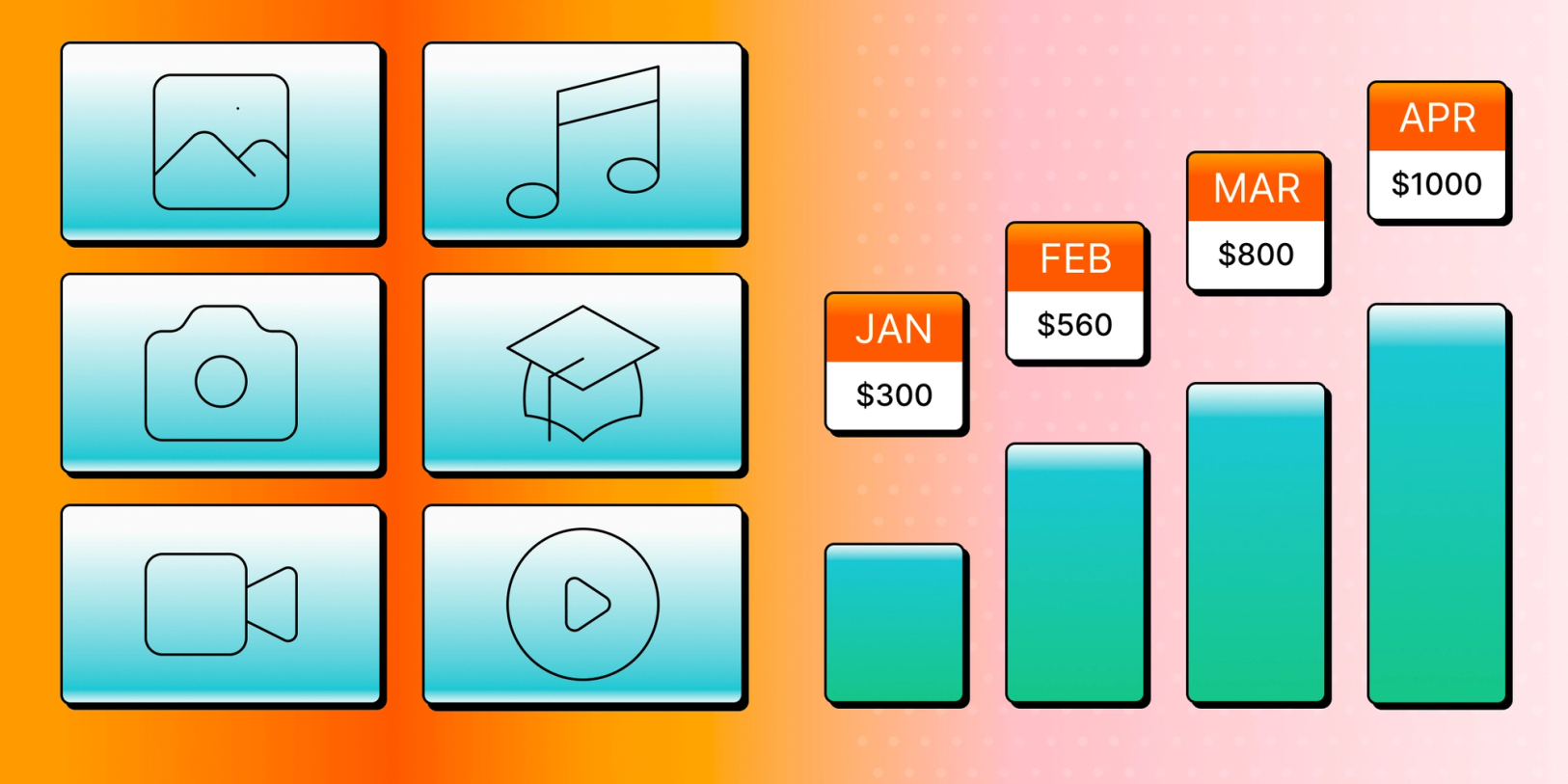Searching for a new revenue stream and wondering what the best digital products to sell are?
The digital product space continues to grow exponentially, and this represents a great deal of exciting opportunities for entrepreneurs and creators looking for ways to diversify and monetize their knowledge or passions.
It can be hard to know where to start, though, when the possibilities seem so endless.
We will help you by showing you how to establish a niche that fits your skills and passions and some winning ideas for the best digital products to sell in 2025.
What is a digital product?
Digital products are intangible goods or services that can be created once and sold repeatedly online. Unlike physical items, which require constant reproduction, digital products offer the freedom to focus on improving and honing your products rather than creating more.
Digital products can take various forms, ranging from digital files like templates, tools, and online classes to downloadable content such as printable artwork and audio files.
Types of digital products
There are a wide variety of digital products you can create and sell, each catering to different audiences and needs. While the possibilities are vast, here are twelve popular and profitable options to consider:
- Online courses (e.g., skill-based training, certifications)
- Ebooks (e.g., guides, novels, how-to manuals)
- Graphic designs (e.g., logos, illustrations, social media templates)
- Software (e.g., apps, plugins, tools)
- Memberships (e.g., exclusive content, subscription-based communities)
- Templates (e.g., resumes, presentations, email layouts)
- Stock photography (e.g., digital art prints, marketing images)
- Podcasts (e.g., premium episodes, ad-free content)
- Music (e.g., tracks, beats, sound effects)
- Website themes (e.g., WordPress themes, landing page designs)
- Tutorials (e.g., step-by-step guides, video walkthroughs)
- Subscriptions (e.g., recurring access to content, software, or services)
These are just a few examples—there are countless other digital products you can explore, depending on your skills and target audience.
The best digital products to sell in 2025
In 2025, well-established formats are taking new turns, and more novel products are becoming successful in the market. Looking at what’s trending and developing in the digital market space helps inform what the best digital products for you to sell are.
AI tools such as ChatGPT and DALL-E are dramatically shifting barriers to entry in terms of you creating your own products.
Let’s take a look:
1. AI Prompts
Being able to use AI effectively will open doors for you in terms of what you are able to create. Good AI prompts — your way of interacting linguistically with AI to ask it to provide you with content — will have a huge impact on what you get from it.
Many people using AI tools like MidJourney are not skilled at prompting, and there are websites set up specifically to help with effective prompt creation.
If you are working in a specific product research area, you can collect and bundle the successful prompts you have created to sell as a package to customers starting similar projects.
Interested in diving deeper?
Check out this video How I make Money Selling AI Prompts
2. Digital Workflows
Operations is one of the biggest headaches for people setting up their own businesses. If you have a successful workflow, you can create this in a product like Zapier and sell the process format to people in your target audience online - allowing them to get on and be more productive thanks to you!
Check out this clip from Simply Digital’s video Sell 10 Easy Digital Products Using AI in 2024
3. eBooks & guides
Ebook creation in 2025 is extremely accessible, owing to the assistance provided by AI and tools like Designrr. You can utilize your existing content, including podcasts, blog posts, video transcripts, and PDFs, to develop and sell ebooks or use them as lead magnets.
Take a look at Joe Popelas’ video How I Made $200,000 With ChatGPT eBook Automation at 20 Years Old
4. Printable wall art and patterns
While not a new concept in the digital realm, AI tools like MidJourney, coupled with design platforms like Canva, are making it super simple for anyone with the desire and an eye for design to sell printable digital art successfully.
Without much effort, you can see what styles and types of art are selling best currently on digital marketplaces such as Etsy, and use that as inspiration to create eye-catching pieces.
Popular YouTuber Alek dives into this topic in his video 7 Digital Products You Can Make Using AI
5. Digital Planners
The popularity of this format shows no sign of reducing. This is a space where you can really hone your niche expertise!
Exercise fanatic? Intermittent faster? A student with ADHD who’s devised amazing personal tools for keeping sane and on track?
There are going to be plenty of people out there wanting your help to organize themselves! With Canva templates and other online design tools, it’s never been simpler to create a beautiful offering for your target audience.
For inspiration, check out this blog article How To Create a Digital Planner to Sell for Coaches
6. Digital Courses
This sector continues to experience considerable growth. Online courses, once difficult to create, have now become more accessible and cost-effective, thanks to user-friendly platforms like LearningStudioAi
This presents a great opportunity for you to share your expertise with others who are waiting to learn.
Take a look at Simply Digital’s video Create your course for free with AI to get an idea of how smooth this process can be!
7. Digital Stickers
The popularity of digital stickers continues to rise, fed by the popularity of digital media such as planners, journals, and messaging apps. Creating digital stickers with design tools such as Procreate and Canva is relatively simple, and using your knowledge of your target audience, you can design playful, imaginative creations for your niche.
8. Canva Templates
This is a booming category of graphic templates that deserves its own spotlight. If you have Canva, Visme, or other cloud design app skills or are willing to spend some time gaining them, there is a huge demand for templates that can be personalized and updated, such as product labels and social media carousel designs, resumes, and more.
Add in the fact that you can create graphical elements in AI art generators, and your ability to create truly unique offerings for your niche market is huge.
Inspired? Take a look at this clip from Simply Digital’s video Sell 10 Easy Digital Products Using AI in 2024
9. Icon Packs
Creating and selling icon packs can be an exciting and profitable venture in the digital design space. Icons are in high demand, and with a diverse array of icon types, including aesthetic app icons, game icons, vector icons, 3D icons, and many more, you can carve out your unique niche to cater to various design needs.
Again, tools like Canva and Creative Fabrica enable you to bring your icon ideas to life without any previous design skills.
The benefits of selling digital products
From low overheads with relatively little upfront investment and the ability to sell to customers from all around the world, there are many reasons why selling digital products appeals to entrepreneurs
In 2020, e-commerce sales totaled 4.28 trillion dollars, as reported by Statista.
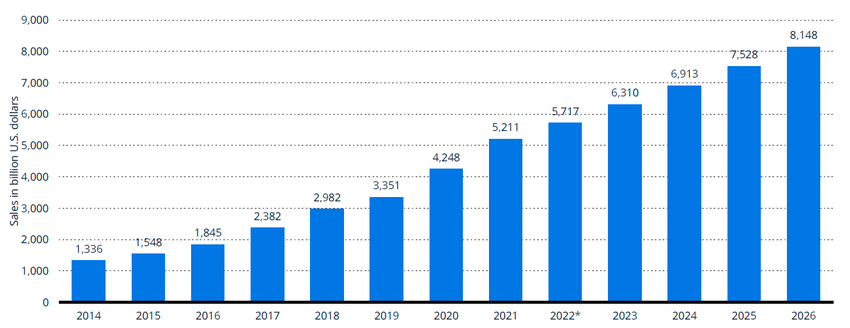
Let's break down some of the many benefits of selling digital products:
1. Lower production and distribution costs
Digital products can be created and distributed with minimal resources, eliminating the need for physical inventory, storage, or shipping. This reduces upfront costs and increases profit margins.
2. Scalability and passive income potential
Once created, digital products can be sold repeatedly without additional effort. With strategies like webinars, social media ads, and automated sales funnels, you can scale your business and generate passive income.
3. Community engagement
Selling digital products allows you to build and nurture a loyal community around your brand. Whether through memberships, courses, or exclusive content, you can foster meaningful connections with your audience.
4. Recurring revenue
Subscription-based digital products, such as memberships or online courses, provide a steady stream of recurring revenue. This creates financial stability and long-term growth opportunities.
5. Flexibility and adaptability
Digital products can be easily updated or adjusted based on market trends and customer feedback. This flexibility allows you to stay relevant and continuously improve your offerings.
6. Access to valuable analytics
Selling digital products gives you access to data and analytics tools. These insights help you understand customer behavior, preferences, and purchasing patterns, enabling smarter business decisions.
7. Low-stakes experimentation
Digital products allow you to test new ideas with minimal risk. You can launch quickly, gather real-time feedback, and refine your offerings without significant time or financial investment.
8. Doing things on your own terms
Selling digital products is a great side hustle or for a full-time business. You can work at your own pace, from anywhere, and create a lifestyle that suits your goals—whether that’s remote work or additional income streams.

The challenges of selling digital products
While selling digital products offers many benefits, it’s not without its hurdles. Here are some common challenges—and strategies to overcome them:
1. Intense competition
The digital marketplace is crowded, making it harder to stand out and attract customers.
Mitigation: Focus on a niche audience, build a strong brand identity, and use targeted marketing to differentiate yourself.
2. Pricing pressure
Customers often expect low prices for digital goods, squeezing profit margins.
Mitigation: Highlight the unique value of your product, offer bundles, or create premium tiers to justify higher prices.
3. Market saturation
Popular niches can become oversaturated, making it difficult to gain traction.
Mitigation: Explore underserved sub-niches or innovate within your niche to offer something unique.
4. Technical challenges
Creating, updating, and maintaining digital products requires ongoing technical expertise.
Mitigation: Invest in reliable tools, outsource technical tasks, or partner with experts to streamline development.
5. Value perception
Customers may undervalue digital products compared to physical ones, impacting pricing strategies.
Mitigation: Use testimonials, case studies, and free samples to demonstrate the value of your product.
9. Maintaining consistent revenue
Digital products often require continuous updates or new releases to sustain long-term income.
Mitigation: Plan a content calendar, gather customer feedback, and offer subscription models for recurring revenue.
By understanding these challenges and implementing proactive strategies, you can navigate the digital product landscape more effectively and build a sustainable business.
How to start selling digital products
Let's look at the key stages that need to be addressed in order to start selling digital products.
1. Identify your passion and expertise
Start by exploring your interests, skills, and knowledge. Look for areas where you have a deep understanding or a unique perspective. Your passion and expertise will give you an advantage when creating and marketing digital products.
For example, are you…
- A designer, developer, or videographer who can share their journey and knowledge with others as a course, eBook, or Blog?
- A coach or wellness practitioner with ideas for a subscription-based online platform?
- A music producer who has a host of loops and samples to sell to others starting out in your musical genre?
- A passionate baker or gardener or DIY buff who has know-how that would be of great value to others starting out?
- A skilled industry professional such as a project or production manager who’s learned to streamline processes and has templates and eGuides to share?
Creating a product that aligns with your unique spin on your area of expertise is the start of a recipe for success
2. Research market trends and customer demand
Study the market landscape to identify emerging trends and customer demands in your area of interest. Conduct market research, analyze competitor offerings, and gather insights on your customers' preferences and pain points by reading reviews for similar offerings.

3. Validate your product ideas
Before investing time, energy, and resources, validate your product ideas. Gather feedback from potential customers, user surveys, interviews, or prototype testing to gauge interest.
4. Focus on solving a problem or fulfilling a need
Successful products address specific problems or fulfill customer needs or desires. Put yourself in the shoes of your target audience and consider how your product can provide value.
5. Start small and iterate
Begin with a minimum viable product (MVP) or a smaller-scale release to test the market. Gather feedback, adapt, and iterate based on user responses and market insights. Gradually refine and expand your digital product based on customer feedback and evolving market needs.
6. Product creation and validation
Validation of a created digital product ensures it meets user needs and performs as intended. Consider launching a beta version to gather real-world feedback, analyze customer reviews, and identify any technical or usability issues. This process helps refine the product, ensuring it effectively addresses market gaps and delivers value before a full-scale release.
7. Develop a strong online presence
Establish an online presence through a website, social media platforms, and content marketing. Share valuable insights, engage with your target audience, and build relationships.
8. Build a community and nurture relationships
Cultivate a community around your digital product by fostering engagement, providing customer support, and soliciting feedback.
8. Learn and adapt
Stay updated with industry trends and technological advancements, and pay attention to customer feedback. It's tough, but you'll benefit from embracing your critics and your fans alike. Be open to incorporating new features or expanding into related niches as you grow.
Most importantly, be prepared to be patient! Finding your niche is a process that usually requires lots of experimentation and adaptation.
Where to sell digital products
Selling digital products requires the right platform to match your goals, resources, budget, and technical ability. Here’s a quick breakdown of the main options:
1. Marketplaces (e.g., Etsy, Gumroad, AudioJungle)
- Pros: Built-in audience, easy setup, and handles technical details like payments and taxes.
- Cons: Fees cut into profits, limited branding control, and high competition.
- Best for: Beginners or those looking to leverage an existing customer base.
2. E-Commerce platforms (e.g., Shopify)
- Pros: Full control over branding, customer data, and customization.
- Cons: Requires more effort and cost to set up and drive traffic.
- Best for: Sellers wanting scalability and a personalized store experience.
3. Checkout pages/carts (e.g., Checkout Page, ThriveCart)
- Pros: Low fees, simple setup, and direct sales without a full website.
- Cons: No built-in audience and limited design flexibility.
- Best for: Creators with an existing audience or those selling standalone products.
4. Course hosting platforms (e.g., Podia, Teachable)
- Pros: Tailored for courses and memberships, easy-to-use interfaces, and built-in tools for student engagement.
- Cons: Transaction fees or subscription costs and limited customization for free plans.
- Best for: Educators and creators selling online courses or subscription-based content.
For a deeper dive into where to sell digital, read:
The 18 Best Websites to Sell Digital Products: Ultimate Guide [2025]
How do I sell digital products with Checkout Page?
Checkout Page allows you to create standalone, no-code checkout pages from which to sell your products from a huge range of places, such as your social media bio, your website, newsletters, and blog articles.
If you already have an audience or want to build a community that you have full freedom to interact with — minus the limitations a marketplace entails — Checkout Page is a great option, and you will also enjoy much lower costs.
Let’s take a look at some example checkout pages that have been created to sell exactly the kinds of digital products that are showing promise in 2025.
Example Digital Product Checkout Pages
Attractive, simple checkout pages for your products can be created and shared in under 10 minutes, with various payment options, including subscription models:
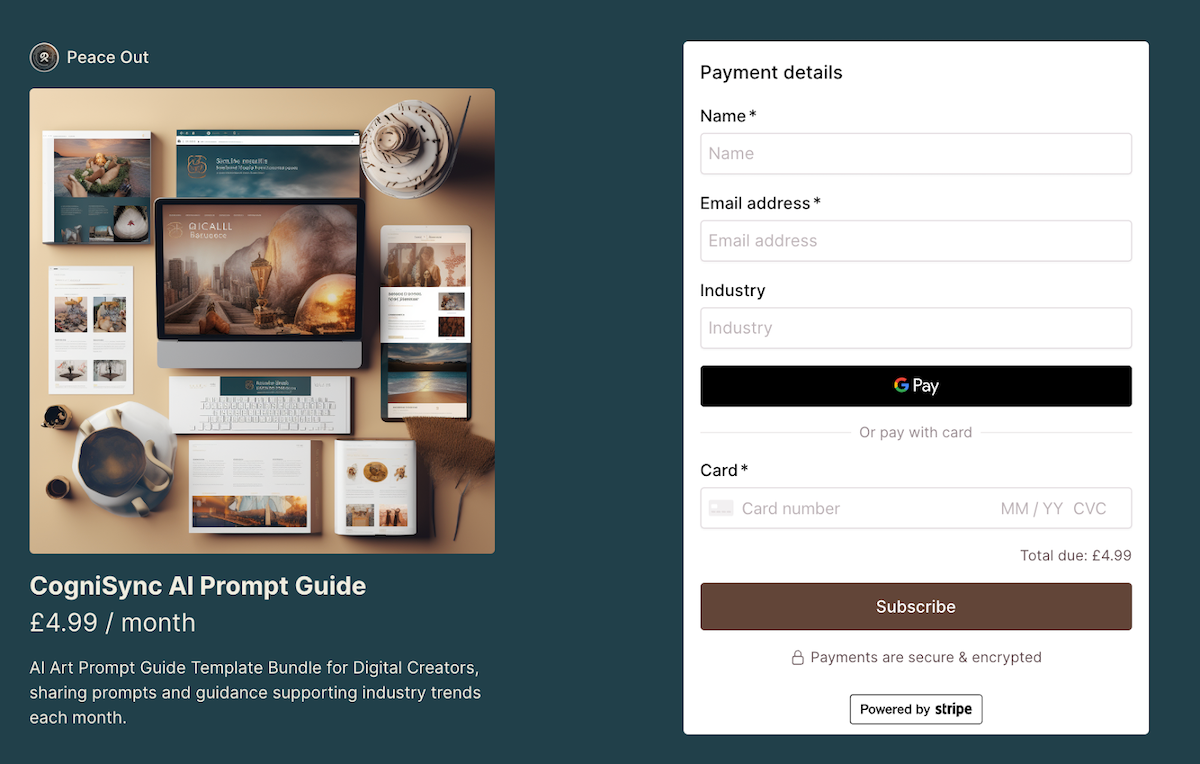
Once your page is created, sharing is simple, and you have multiple options at your fingertips:

Creating products to sell to your niche audience enables you to sell from anywhere you connect with them, with a range of attractive and simple layouts, fully customizable by you:
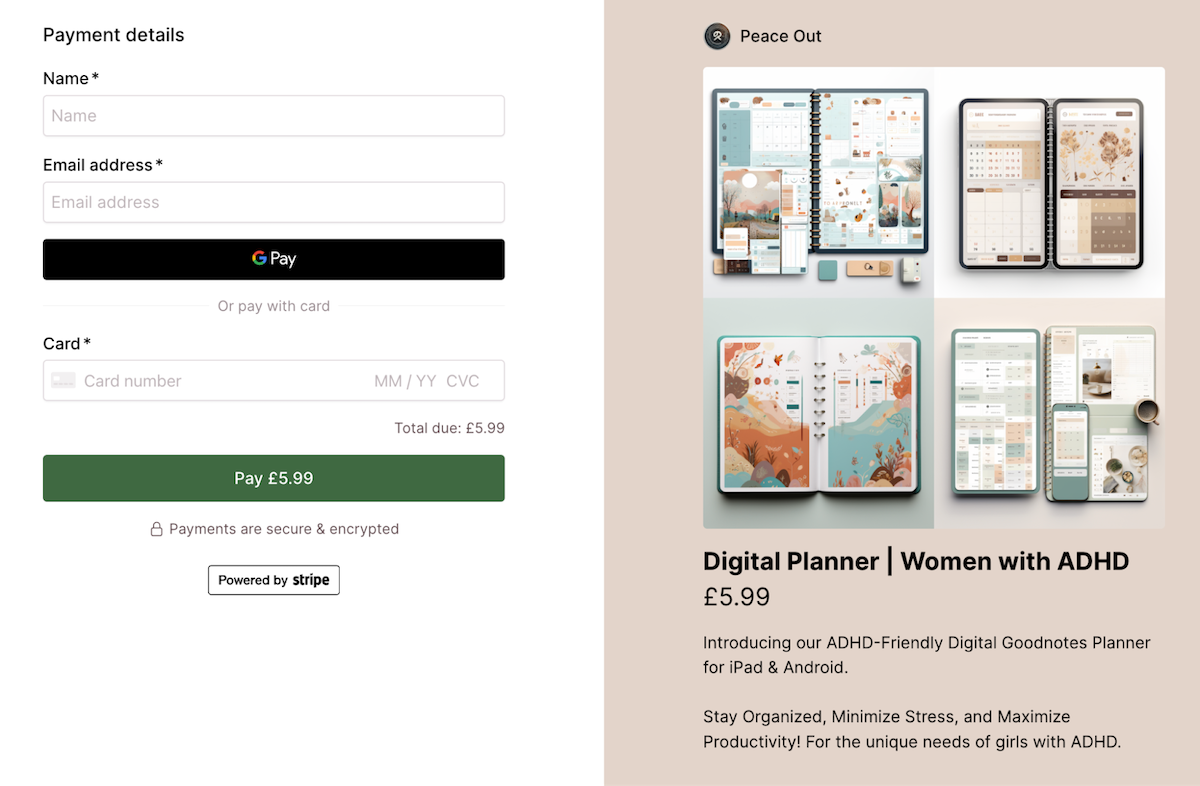
Your page can be shared as a QR code to place on leaflets and posters as well as online platforms:
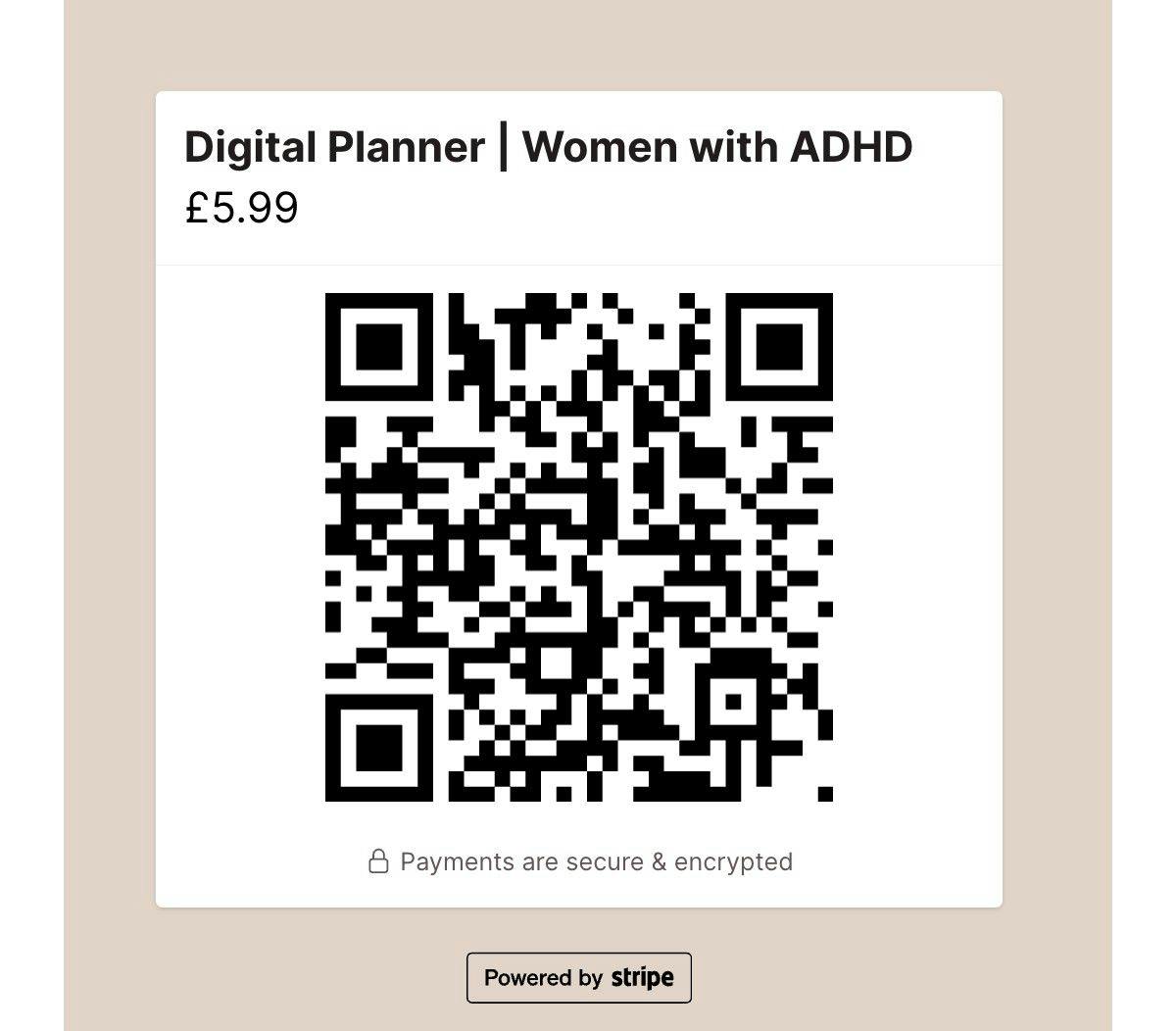
Selling digital files is made super simple for creatives wanting to share their creations:
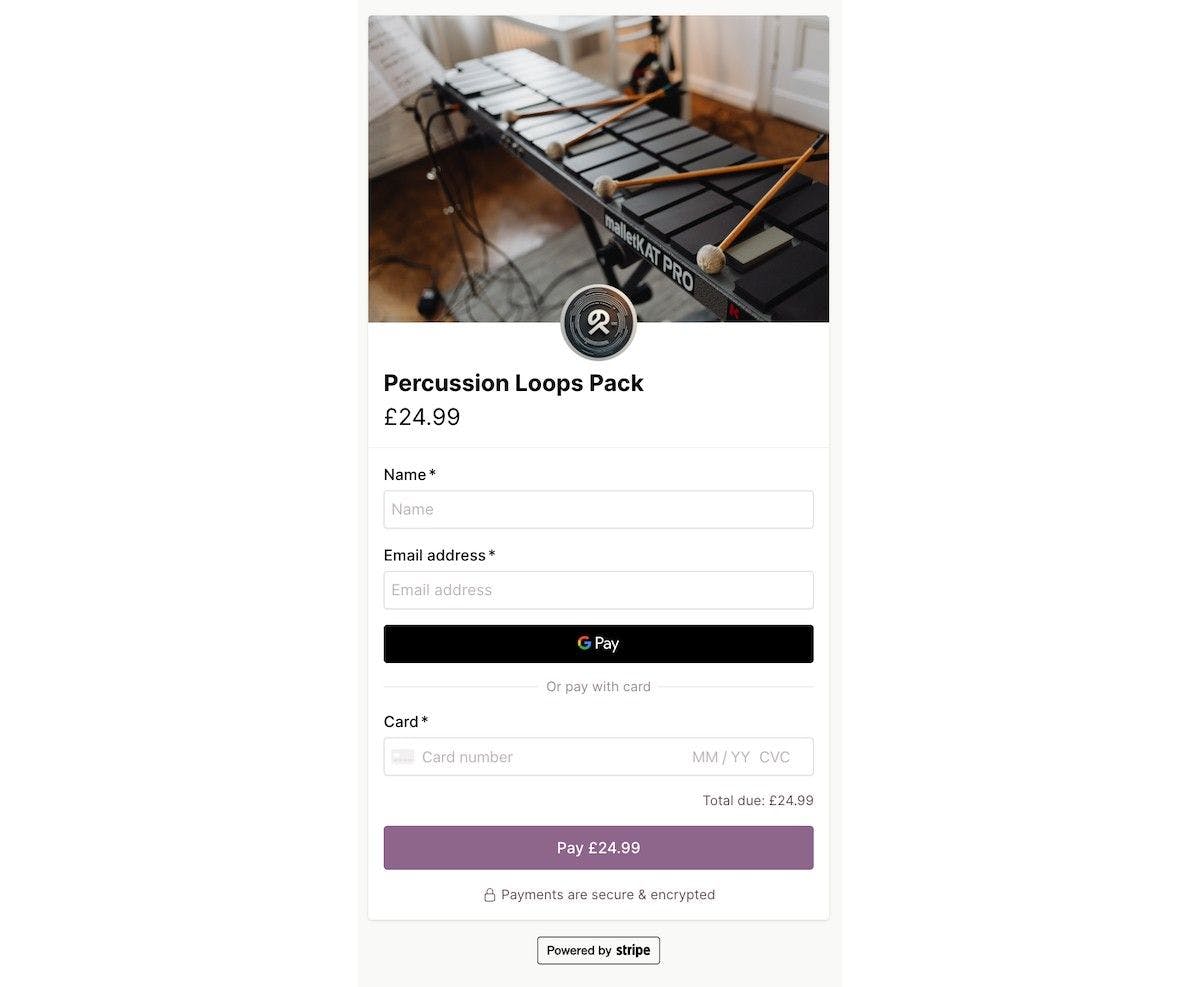
Adding files to your listing can be done in a few clicks, enabling your customers to access them quickly and easily:

This is just a small taster of checkout pages that can be created in just minutes. If you are keen to learn more about the best type of pages for the product you are interested in selling, why not read 9 types of checkouts (and when to use them)
If you’d like to start your 7-day free trial with us and experiment with creating some pages yourself, you’ll find lots of helpful information on our website, beginning with our Getting Started section.
